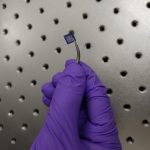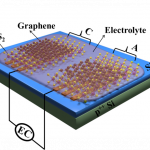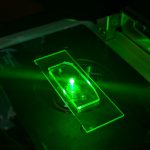Chandni’s lab tracks the movement of tiny subatomic particles to unravel fascinating behaviours

Electronic devices have become an integral part of our daily routine, transforming the way we live, work, and connect with others. From the smartphones we use to the electric cars we drive, we are surrounded by devices that rely on the movement of subatomic particles known as electrons. Have you ever wondered how these tiny particles control the behaviour of these devices? What if you could delve into their movements, visualise their actions, and manipulate them in materials that are only a few nanometres thick? This is precisely what Chandni U and her research group at IISc are exploring — tracking the transport of electrons in one- and two-dimensional material systems by combining concepts from materials science and experimental condensed matter physics.
Chandni’s fascination with the world of physics started at an early age when she started reading popular science articles and watching science-related programs on the Doordarshan TV channel. During her schooling in Kasargod, a small town in Kerala, she was initially eager to learn about large celestial objects like stars and planets, but her academic journey eventually led her to explore the intricate world of tiny atomic particles. After completing her bachelor’s degree, Chandni joined IISc for her master’s and doctoral studies under the guidance of Arindam Ghosh in the Department of Physics. “During my master’s degree, Prof Arindam played a pivotal role in sparking my interest in solid state physics, while the classes taught by the late Prof Venkatraman were a tremendous source of inspiration for me,” recalls Chandni.
During her master’s, Chandni worked with shape memory alloys, and later on ultrathin gold nanowires during her PhD. She then joined the California Institute of Technology (Caltech) in the USA as a postdoctoral scholar. It was during this time that she first started exploring the electronic properties of graphene. Her focus was on building transistors that relied on a unique quantum mechanical property called tunnelling. Tunnelling refers to the phenomenon where electrons from one layer of a material can move to another layer through a barrier without physically crossing it. “An analogy to understand tunnelling is to imagine a hill that needs to be climbed. According to classical physics, the only way to climb the hill is by physically crossing it. However, with tunnelling, it’s like the electron can pass through the hill as if it is a tunnel,” explains Chandni. Such work on tunnelling has the potential to revolutionise the way transistors, which are essential components in electronic devices, are built. By understanding and utilising this quantum mechanical property, more efficient and powerful devices that can operate at the nanoscale level can be developed.
In May 2017, Chandni joined the Department of Instrumentation and Applied Physics (IAP) at IISc as an Assistant Professor, where she set up her research group to explore the fascinating world of low-dimensional systems. One of the key areas of her group’s research is the study of two-dimensional electron systems in graphene and other low-dimensional semiconductor and metallic systems. Her team focuses on various approaches combining unique nanofabrication techniques with electrical transport, tunnelling spectroscopy and measurements at low temperatures and high magnetic fields.
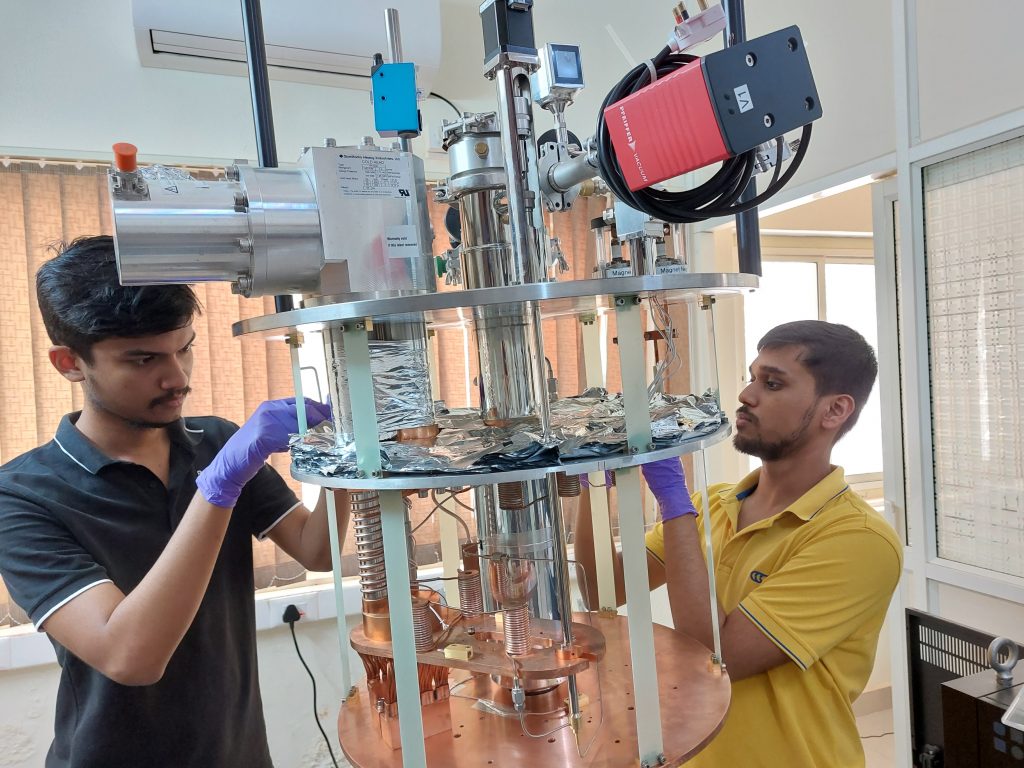
One of her group’s recent studies published in Nature Physics received a lot of attention. Carried out with collaborators from IISc, South Korea and Japan, it describes the exciting quantum phenomena that emerge when two layers of graphene are twisted at a specific angle, called the magic angle. The resulting twisted bi-layer graphene exhibits unique properties such as magnetism and superconductivity that are impossible to achieve in isolated graphene sheets. Chandni and her collaborators have also discovered that by changing the environment around the graphene — like adding another material called tungsten diselenide — they can control how the electrons behave to a greater extent. These experiments have uncovered fascinating patterns called charge density waves, which suggest that the electrons are organising themselves in a very specific way leading to improved material properties like superconductivity. This could lead to faster and more efficient devices that are vital for fields like quantum computing.
Another area of interest for Chandni’s group is using Electrostatic Force Microscopy to probe materials that are made up of different layers stacked together in a special way (called van der Waals heterostructures). Materials like graphene, boron nitride and transition-metal dichalcogenides are stacked on top of each other like a sandwich, with what are called weak van der Waals forces holding the various layers together. These heterostructures show unique electronic properties that can be tailored by varying the type of materials used and their stacking configuration. These studies help scientists like Chandni learn about the behaviour of a wide range of nanoscale materials, which could help to improve the performance of electronic and optoelectronic devices.
The group has also recently developed a new Quantum Hall interferometer by using marginally twisted bilayer graphene. These devices are composed of tiny electronic circuits that are used to study the behaviour of electrons under the influence of a magnetic field. The team has found that this newly fabricated nanodevice shows distinct patterns in the movement of electrons when interacting with the applied magnetic field. Such observations have important applications in the fields of condensed matter physics and quantum computing.
Like other researchers, the path to setting up a research lab at IISc was not easy for Chandni. She recalls purchasing a cryostat worth around Rs 1.5 crores from the USA once, only to discover upon arrival that it had a manufacturing problem. “It was quite disheartening,” Chandni says. “We had to send it back to the USA, which took a lot of time and resources. During that period, our experiments came to a standstill, and it was frustrating not knowing what to do next.”
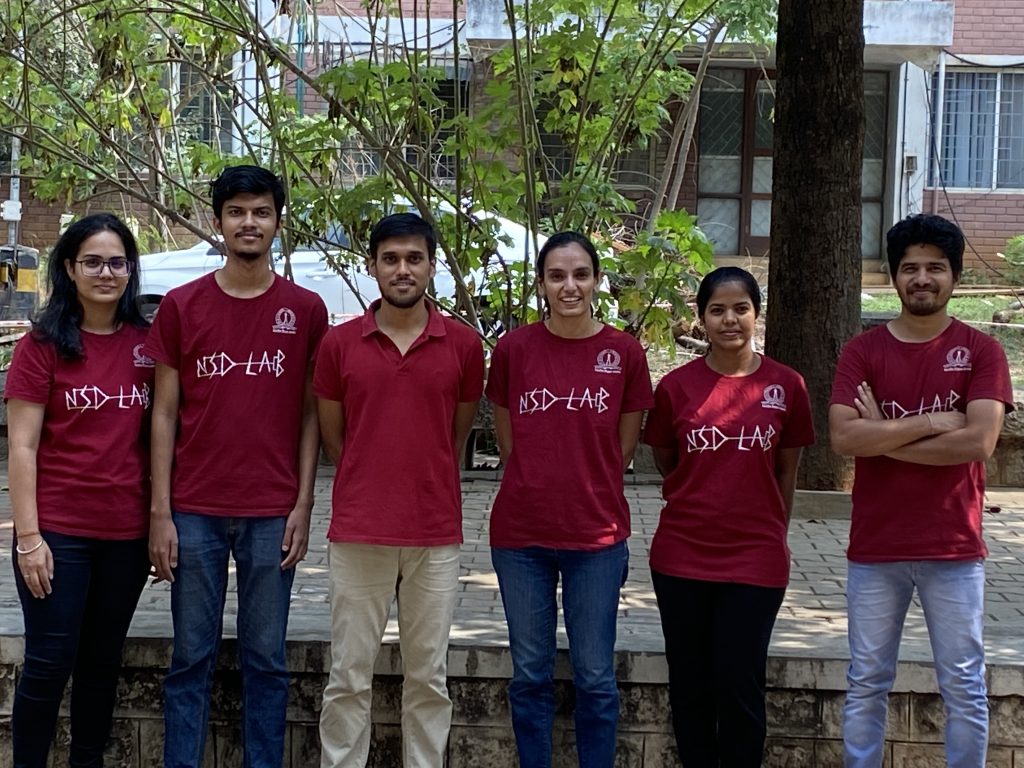
Despite the setbacks, Chandni says she has tried to maintain an optimistic attitude towards her work. One of the ways she keeps her team motivated is by conducting weekly meetings to discuss the latest developments and advancements in their field across the globe.
Reflecting on her experiences thus far, Chandni emphasises the importance of focusing on one’s work and staying true to their passions. “You don’t need to push yourself to be good; simply follow your passions and do what makes you happy.”

